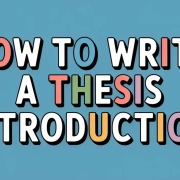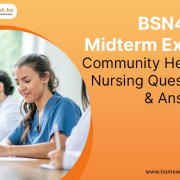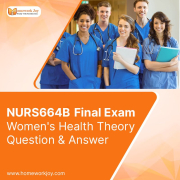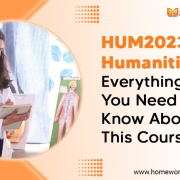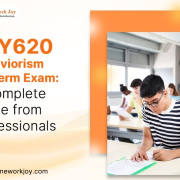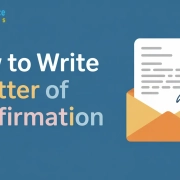How To Write A Thesis Introduction
Writing a thesis is a journey that begins with one of the most important parts, the introduction chapter. If you’ve ever wondered how to write a thesis introduction, you’re not alone. The introduction sets the foundation for the rest of your paper, and it’s where you make your first impression. It’s not just about presenting a topic; it’s about building a sense of purpose, highlighting the significance of your research, and inviting your reader to continue. Whether you’re working on a master’s thesis or a doctoral dissertation, the introduction plays a crucial role in organizing your thoughts and providing clarity.
Key Takeaways
- A good thesis introduction gives your research purpose by clearly presenting the topic, providing background, and helping the reader know what to expect from the rest of your work.
- Strong introductions often follow a sequence that includes stating the topic and background, briefly reviewing related literature, defining scope and key terms, outlining and evaluating the current situation, and identifying the research gap.
- You should also clearly express the importance of your research, state the main research questions, define your aims and objectives, and, where appropriate, present your hypothesis.
- The final steps include previewing how the thesis is structured and summarizing the methodology you’ll use, helping the reader anticipate the flow of your paper without overwhelming them with detail.
- Keep your introduction clear, specific, and engaging by using simple language, avoiding vague or overloaded paragraphs, and revising it once your thesis is complete to align with your actual research and findings.
What is a Thesis Introduction?
A thesis introduction is more than just a starting point. It’s the opening chapter that provides essential context and outlines the structure of your research project. The introduction serves several key roles:
- It explains what your thesis is about and why the topic matters.
- It outlines the specific focus of your study and provides any necessary background.
- It sets the tone for your writing style, introducing how you plan to present your thoughts and findings.
In essence, your introduction draws the reader in and guides them gently into your research journey. It’s the map that helps them navigate what’s to come.
Need Help With Your Thesis?
Struggling with your introduction chapter? Place your order today by clicking the ORDER NOW button above to get our expert academic writing help, plagiarism free paper.
How to Write a Thesis Introduction Chapter
Before we explore each step in detail, it’s important to understand that not every thesis introduction includes all the same elements. Different disciplines and supervisors may expect different formats. Still, there are common stages that most strong introductions follow. We’ll go through these stages below so you can decide which ones best suit your research.
1. State the General Topic and Give Some Background
Start by introducing the subject broadly. What is the topic? Why is it worth discussing? Give a bit of background to help your reader understand what you’re talking about, especially if they’re not familiar with the field.
For instance, if your topic involves viral quasispecies or DNA sequencing, it’s a good idea to briefly explain what those terms mean and why they matter. Make this part easy to follow, pretend you’re chatting with someone who doesn’t know the topic at all. Think of it like this: you’re laying out the basics so everything else in the thesis makes sense.
2. Provide a Review of the Literature Related to the Topic
This isn’t a full literature review, save that for chapter 2, but it’s helpful to briefly mention what previous research says about your topic. This shows your reader that you’ve done your homework and that your topic is grounded in existing evidence.
Mention key findings or common themes that researchers agree on. You might say something like, “Previous studies on SARS-CoV-2 have mostly focused on infection rates and vaccine development, but few have addressed the language used in public health messaging.” This sets you up to explain how your work fits into the bigger picture.
3. Define the Terms and Scope of the Topic
If your thesis involves complex terms, like multimethodology, photovoltaics, or artificial intelligence content detection, define them early. Keep it simple and direct. This part helps clarify the context of your study.
Also, explain how wide or narrow your study is. Are you focusing on a particular region, time period, or data set? Being clear about your scope shows that you’ve thought carefully about what you’re including and why.
4. Outline the Current Situation
This part gives your reader a sense of what’s happening in your field right now. Are there major debates? Unsolved problems? Gaps in the data? Let’s say your thesis is about the mental lexicon in speech production. You could talk about the current tools used to study how people retrieve words while speaking.
This helps build up to the reason your research is important. You’re showing the reader, “Here’s what’s going on, and here’s where I fit in.”
5. Evaluate the Current Situation and Identify the Gap
This is a critical step. Once you’ve outlined what’s happening, take a moment to point out what’s missing. Is something being overlooked? Are current methods flawed? Does the literature review show a bias?
For example, maybe most research into the hepatitis C virus focuses on clinical signs and symptoms but ignores how patients interpret them based on their cultural background. That’s a gap your study could address. Identifying this gap not only justifies your thesis but also shows you’re contributing something new.
6. Identify the Importance of the Proposed Research
This is your chance to answer the big “So what?” Why should people care about your research?
Maybe your work can help detect new strains of an RNA virus more efficiently. Or perhaps your analysis of sentence structure can improve how language-learning apps teach grammar. Point out the practical or theoretical benefits of your research, whether they apply to virology, science education, or understanding how people think.
7. State the Research Problem or Questions
This is the heart of your introduction. What exactly are you trying to find out?
Your research questions should be clear, focused, and relevant. Avoid vague wording. Instead of saying, “I want to explore language,” you could say, “This research investigates how speech influences word recall in multilingual speakers.”
Being specific helps you and your readers stay focused throughout the rest of the thesis.
8. State the Research Aims and/or Research Objectives
Closely tied to your research questions, this part explains what you hope to achieve. Keep it simple and measurable.
Aims are broader (e.g., “To evaluate the impact of language on memory”), while objectives are more specific (e.g., “To measure recall accuracy across three language groups”).
This also helps your supervisor or examiner evaluate whether your results actually match what you set out to do.
9. State the Hypotheses
If your research involves testing ideas, especially in science, psychology, or quantitative fields, state your hypothesis clearly. For example, “The hypothesis is that students taught with mixed methods instruction will perform better in final assessments.”
Don’t worry if your thesis is based on qualitative research or doesn’t use a formal hypothesis; this step isn’t required in every case.
10. Outline the Order of Information in the Thesis
Give your reader a quick preview of how your thesis is organized. This is like a table of contents in paragraph form. You could say something like:
“Chapter 2 presents the literature review, followed by Chapter 3, which explains the methodology. Chapter 4 presents key findings, and Chapter 5 offers a discussion of the results.”
This helps people understand the structure and flow of your work before they dive deeper.
11. Outline the Methodology
Finally, offer a brief hint at your research methods. Are you doing interviews? Analyzing documents? Running experiments? You’ll go into full detail later, but here you just want to let the reader know what kind of data you’ll be working with and how you’ll handle it.
Whether you’re working with qualitative or quantitative methods, or even a mixed methods approach, this overview helps build trust and sets expectations.
Get Your Thesis Introduction Done
Save time and avoid stress with our academic support. Place your order today by clicking the ORDER NOW button above to get our expert academic writing help, plagiarism free paper.
Common Mistakes to Avoid
- Jumping in without background: Never assume your reader knows the topic as well as you do.
- Being too vague: Avoid saying things like “This study will explore many areas.” Be clear and direct.
- Overloading the intro with too much detail: Save the heavy data and quotations for later chapters.
Tips for Making Your Thesis Introduction Engaging
- Use simple, conversational language to explain complex ideas.
- Start with a real-world example or a relatable situation.
- Share a brief personal motivation (if appropriate) to add sincerity.
- Use transitions like “This brings us to…” or “Here’s why this matters…”
How Long Should Scholarly Introductions Be?
Your introduction should be long enough to cover the essentials but not so long that it feels overwhelming. As a general guide:
- For a 10,000-word thesis: 800 to 1,000 words
- For a 20,000-word thesis or dissertation: around 1,500–2,000 words
Make sure to balance it with other sections like your literature review and methodology.
When Should You Write the Thesis Introduction?
Some people write it first; others wait until the end. I personally recommend writing a rough draft at the beginning, then revising it once the rest of the thesis is done. That way, your introduction will reflect the actual structure and findings of your work.
Remember to keep it aligned with your abstract, research objectives, and conclusion.
Real-World Examples of Thesis Introductions
Conclusion
Writing a good thesis introduction is like building the front porch of your research home; it welcomes the reader, gives them a sense of what to expect, and makes them want to step inside. By carefully walking through the key stages, like stating your aims, presenting your hypothesis, and showing the importance of your research, you create a clear and logical beginning. With a little revision and attention to detail, your introduction can be a strong foundation for your entire thesis.
Stuck on Your Introduction Chapter?
Get a personalized, well-written thesis introduction from academic professionals. Place your order today by clicking the ORDER NOW button above to get our expert academic writing help, plagiarism free paper.
How To Write A Thesis Introduction FAQs
How do I start my thesis introduction?
Begin by introducing your general topic, then give a bit of background and explain why the subject is important. Use simple language and be specific.
What should be avoided in a thesis introduction?
Avoid vague statements, unnecessary jargon, and diving too deeply into details better suited for later chapters.
Can I use questions in my introduction?
Yes, posing a question, especially if it leads into your research, can be an effective way to engage your reader.
Is it okay to use personal language?
It depends on your field, but a little personal motivation can make your introduction more engaging and relatable.
With a passion for helping students navigate their educational journey, I strive to create informative and relatable blog content. Whether it’s tackling exam stress, offering career guidance, or sharing effective study techniques
academhelper.com academhelper.com
"Looking for a Similar Assignment? Get Expert Help at an Amazing Discount!"


